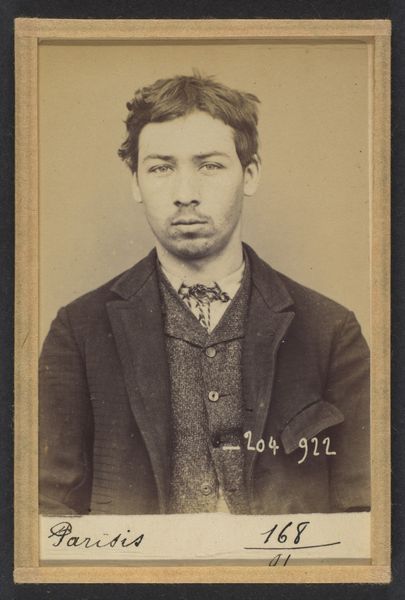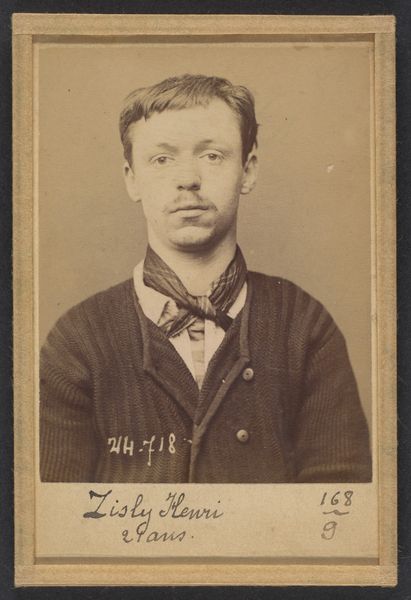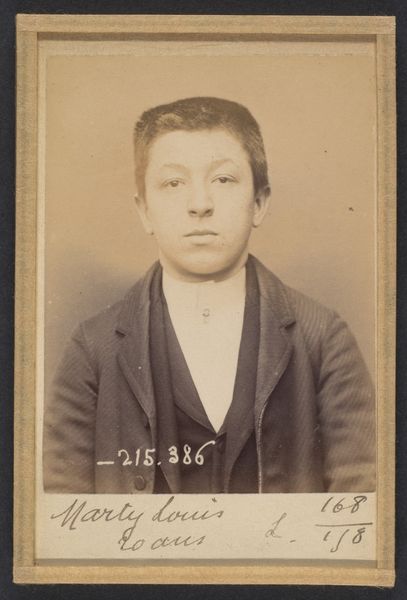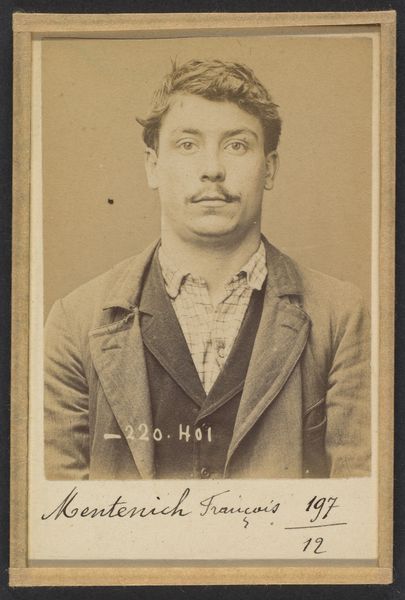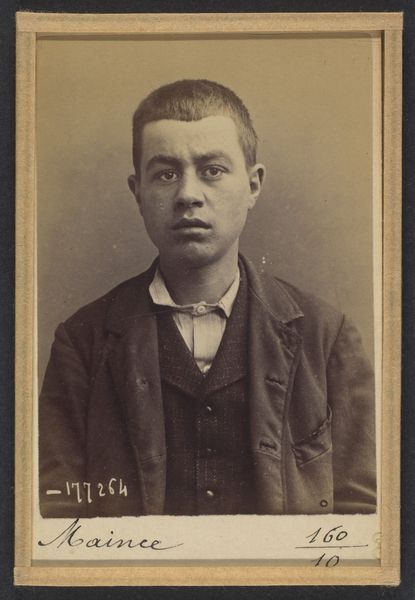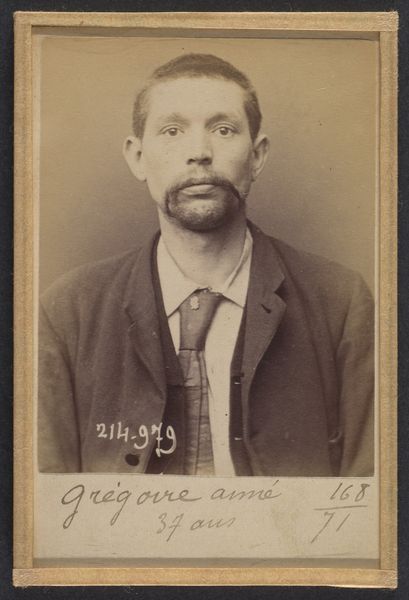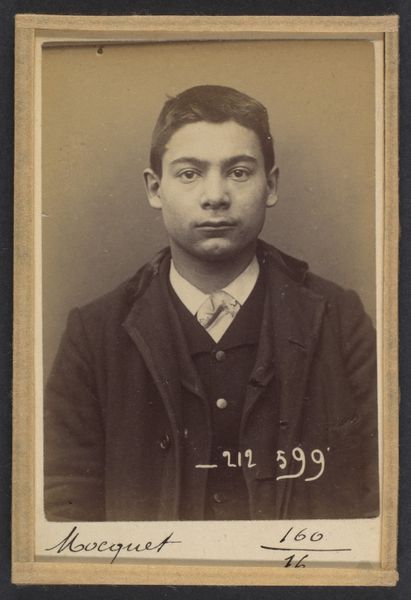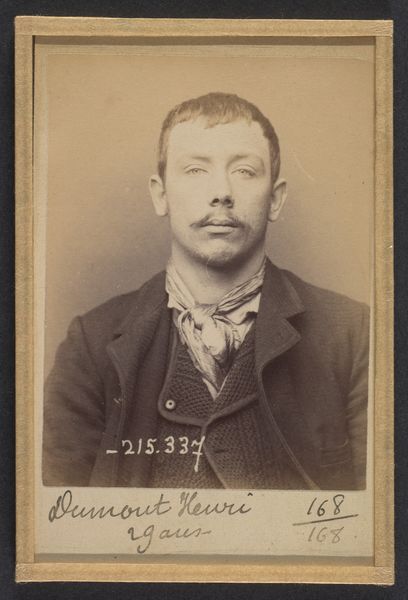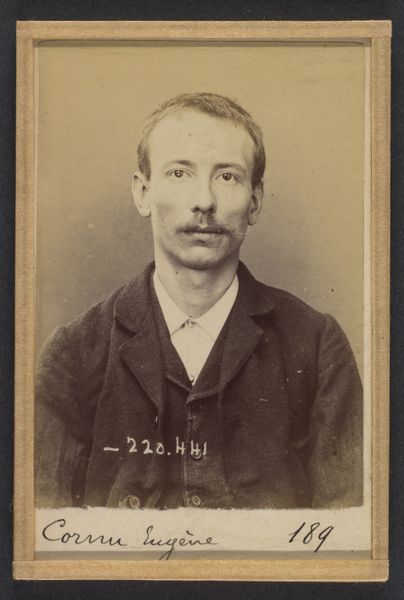
Herouard. Henri. 17 ans, né à Paris XVIIe. Serrurier. Anarchiste. 6/3/94. 1894
0:00
0:00
photography
#
portrait
#
african-art
#
photography
#
19th century
#
men
#
portrait art
#
realism
#
poster
Dimensions: 10.5 x 7 x 0.5 cm (4 1/8 x 2 3/4 x 3/16 in.) each
Copyright: Public Domain
Editor: This photograph by Alphonse Bertillon, simply titled "Herouard. Henri. 17 ans, né à Paris XVIIe. Serrurier. Anarchiste. 6/3/94.", it’s… striking. A mugshot, essentially. But it feels charged with something more. How should we approach a piece like this? Curator: This isn't simply a portrait, it's a document steeped in the anxieties of late 19th-century France. Bertillon developed this system of "portrait parlé" for the Paris police, using photography and anthropometry to identify repeat offenders. Knowing this, how does the image function beyond a simple likeness? Editor: It feels like an attempt to classify, to control… This young man, labeled "anarchist," becomes a symbol of social unrest, doesn't he? Curator: Precisely. Anarchism was a major fear for the French government at the time, a threat to social order. This photograph, and the Bertillon system as a whole, became tools of surveillance. The starkness, the almost clinical presentation... it's all part of constructing this young man as a figure of danger. What do you make of the subject's gaze? Editor: He's staring straight ahead, not defiant, but not submissive either. It’s unsettling. Was Bertillon's system widely adopted? Curator: It gained international attention, becoming a standard police practice, although its flaws were eventually exposed. Thinking about the power dynamics, who gets to be seen, who gets to be categorized and judged – how do you see that reflected in contemporary art and media? Editor: Wow, I hadn't thought about the connection to contemporary surveillance culture. Seeing how systems of power get encoded in something as simple as a photograph really puts things into perspective. Curator: Exactly. It allows us to think critically about the supposedly neutral technologies we use today.
Comments
No comments
Be the first to comment and join the conversation on the ultimate creative platform.

